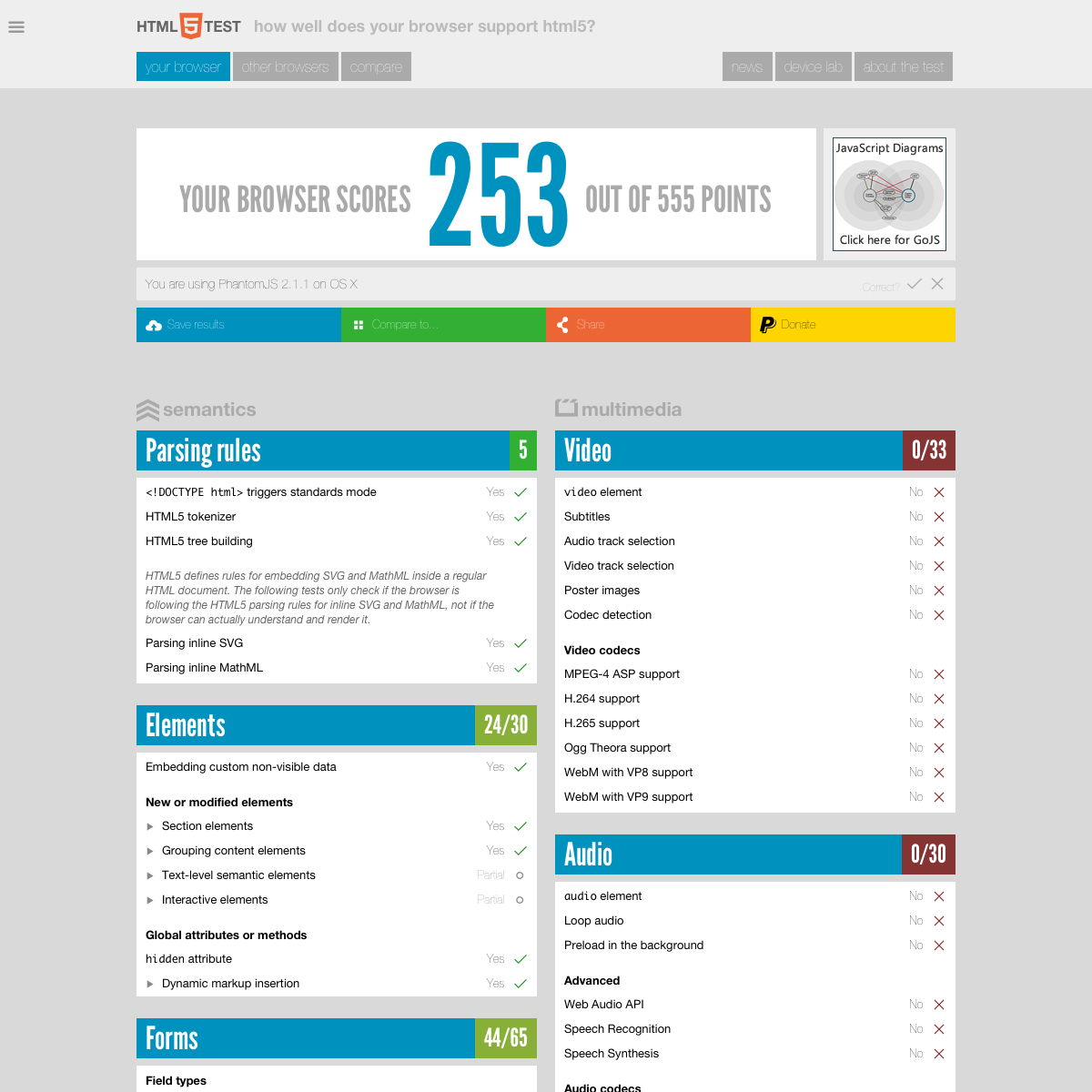Thum.io's Technology
Building a Website Screenshot Generator
When we started building Thum.io, we set out to build the best website screenshot generator out there. We wanted to build on top of existing tools, but also wanted to make sure we would produce the highest quality thumbnails.
Evaluating Browsers
We use HTML5Test to test our browser configuration. HTML5Test gives a great overview of what features are supported by a given browser. Some things to look for when evaluating a render solution are:
- Video element
- H.264 support
- Picture element
- Support for retina screenshots
- Phone Emulation
Phantom.js
PhantomJS is a fast head-less browser based on Webkit. It is easy to install and easy to use. The only problem is that it doesn't have the support that you would expect from a full-featured browser. We created a screenshot using this code:
html5.js:
var page = require('webpage').create();
page.viewportSize = { width: 1200, height: 1200};
var address = 'http://www.html5test.com/';
var output = 'html5.png'
page.open(address, function (status) {
if (status !== 'success') {
console.log('Unable to load the address!');
phantom.exit();
} else {
window.setTimeout(function () {
page.render(output);
phantom.exit();
}, 5000); // Change timeout as required to allow sufficient time
}
});
There is a minor complication which is that by default PhantomJS takes the website snapshot as soon as the page loads. HTML5Test does some of its work in javascript after the page loads, so we need to add a delay, that's what the "setTimeout" block does.
Next run:
phantomjs html5.js
And that will produce html5.png:

As you can see, the page looks ok, but 253 can hardly be considered a good browser scrore. So PhantomJS wasn't going to work for us.
Selenium
Selenium is a well known Web Automation framework and it has the ability to take screenshots. The nice thing about Selenium is that it uses an actual browser render pages, so the website snapshot is going to look exactly as it would on a desktop computer.
Memory management
One thing Selenium doesn't seem to be designed for is long-lived server environments. Selenium was originally designed for running test-cases, where you spin up a Selenium server, run a bunch of tests, and then spin down the server. We are using selenium instances that run for days or even weeks at a time so we very quickly uncovered some issues with long running servers. The good news is that our fixes are now a part of selenium.
Website Screenshots using Selenium
The built in Selenium screenshot system relies on javascript. This causes problems
because it means that if the page has javascript running, then a screenshot of the
website can't be taken. It also means that you can't take any screenshots until
onComplete fires. This wouldn't work for us since we wanted
to animate the rendering, so we built our own screenshotting code.
Building the API
When developing our API, we wanted the resulting url's to be as readable as
possible. Placing the URL in the path rather than in a url parameter means
that url's don't have to be encoded. For example compare these two:
/get/http://www.google.com/?q=test /get/?url=http:%2F%2Fwww.google.com%2F%3Fq%3Dtest
Since we aren't going to use URL parameters, we can use slashes to seperate parameters. For example
/width/1200 or /wait/5/.
If we combine these into one url we can create an image similar to our PhantomJS
test using this url:http://image.thum.io/get/width/1200/wait/5/https://www.html5test.com/
Support
We hope this overview helps people understand our technology, but technology
is never enough to build great products. That's why we take supporting our
users very seriously.
If you have any questions or comments,
email support@thum.io.